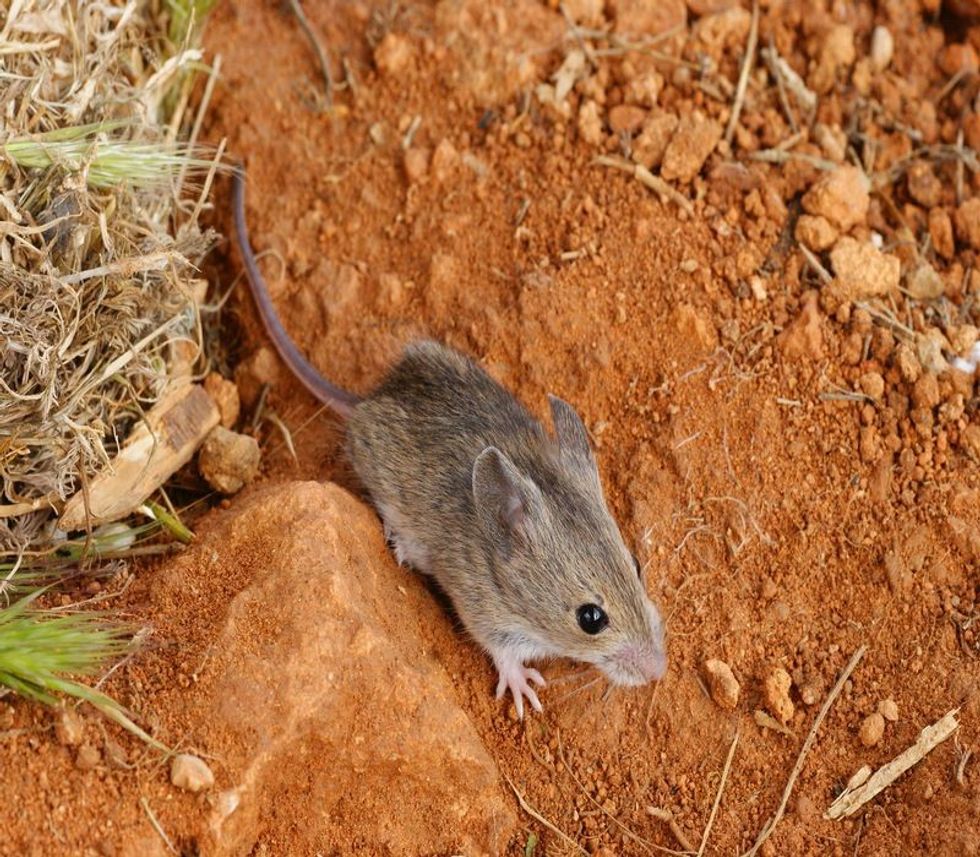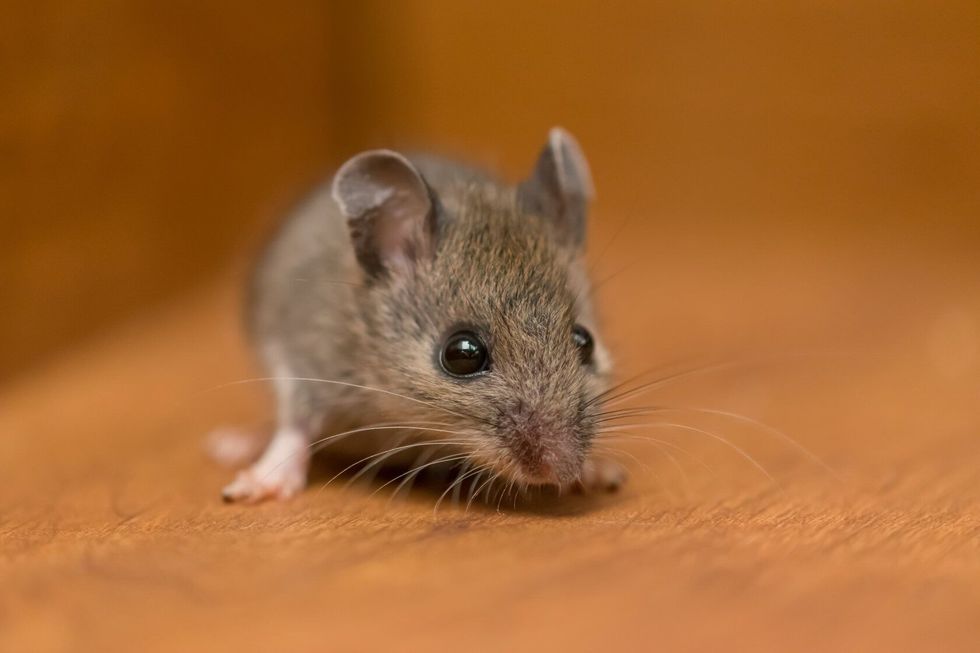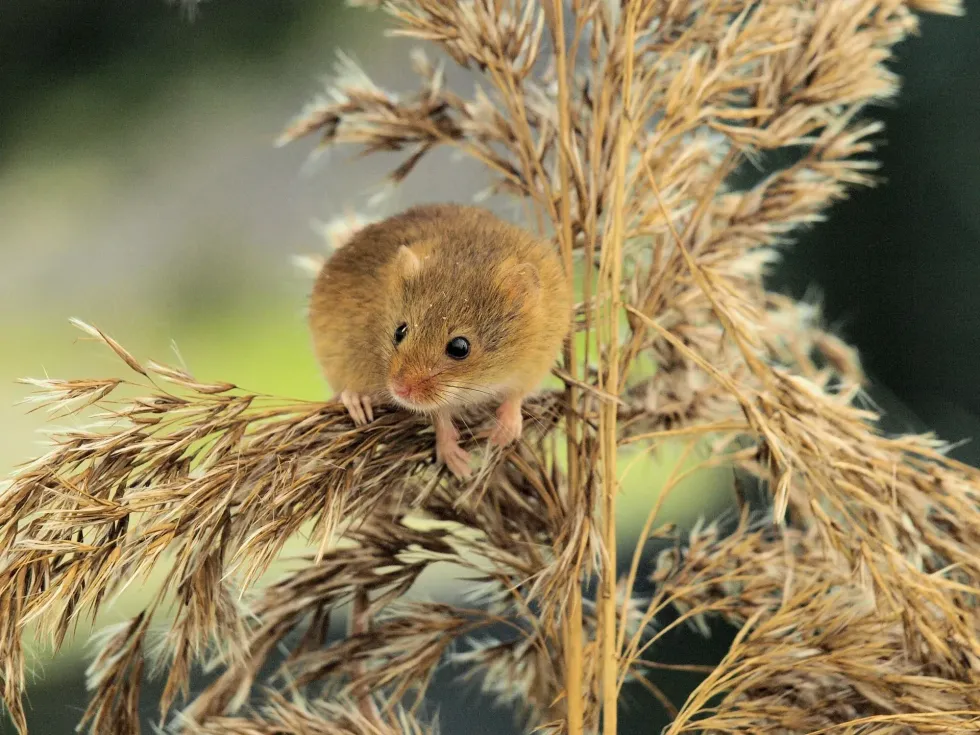Mice are tiny critters with a knack for making themselves at home anywhere they can find warmth and food, including your home. For mice, a nest is more than just a place to sleep; it's a nursery for baby mice and a refuge from dangers outside.
In this exploration, you'll uncover what these nests are made of, signs you might have an uninvited furry visitor, and how to prevent mouse-related troubles in your space. These little architects use various materials to create their perfect hideout. By knowing what to look for, you can identify and address a mouse infestation before it becomes a bigger problem.
Whether you've spotted the occasional mouse droppings or you're suspicious of chewing sounds behind the walls, understanding mouse behavior and nesting is important. This article will serve as your comprehensive guide to identifying, preventing, and resolving issues with house mice and their nests.
Recognizing The Signs Of A Mouse Infestation
 Shutterstock
ShutterstockHave you found a hidden, ball-like structure in a quiet part of your home? You may have discovered a mouse nest. Explore these facts to learn more.
- Mice excel at building their nests in undisturbed, secluded areas, keeping their presence discreet.
- Stumbling upon a nest often indicates a larger mouse infestation issue that you may not have noticed.
- Look out for small gnaw marks on items in your pantry, as this can be a sign of mice.
- Hearing scurrying sounds at night can also suggest that mice have made themselves at home in your house.
- Mice can fit through tiny openings, choosing to live in areas of your home that are typically quiet and less frequented. So keep an eye out for small openings you did not create.
- Mouse droppings are a major telltale sign of infestation. Though tiny, these dark pellets can lead you to their nests. You might find them along floor sewers, near food sources, or in drawers.
Where are the most common places to find mouse nests in your home?
Mice enjoy tucking their nests away where they have easy access to food. Here's where you might come across these ball-like structures:
- Mice seek out warm and hidden spots to build their nests, favoring quiet and undisturbed locations.
- Common nesting sites for mice include behind kitchen appliances and inside unused cardboard boxes.
- They also favor the hidden spaces within walls, creating nests out of sight.
- To construct their nests, mice resourcefully use materials like shredded fabric, paper scraps, and bits of plant matter.
- Additional nesting locations can be under furniture, in cluttered closets, or attic insulation.
- Mice may also build nests in garage corners using debris like leaves, twigs, or even vehicle insulation.
- In outdoor settings, mice may nest in sheltered areas, such as piles of wood, dense vegetation, or recently planted crop fields.
- Mice are adaptable and can create nests from almost any soft material they find, including household insulation or packing materials.
Materials Used By Mice To Create Nests
Did you know that mouse nests are quite enchanting little structures? Mice are not picky about their bedding; they'll gather anything soft and pliable that can be found around your house or in nature.
- Mice are creative nest builders, using items such as paper and wood chips to construct their homes.
- Fiberglass insulation from your home can also become a cozy lining for a mouse nest.
- They have a habit of tearing apart cardboard boxes and fabric materials for their nest-making supplies.
- They may also use dried leaves, grasses, and other organic materials found in nature for nest construction.
- Mice can strip softer materials like bits of string, cotton, or wool to add to their nesting blend.
- In urban areas, mice aren't shy about scavenging through garbage to find suitable materials for their nests.
- They may even steal materials from other rodents or birds to craft a comfortable nest for their young.
- Mouse nests can sometimes be found with items stolen from human dwellings, such as sponges, napkins, or bits of plastic.
Qualities Of Typical House Mouse Nests

A mouse nest is often a dome-shaped collection of soft materials and appears rather messy. These facts explain some of their qualities:
- Mouse nests typically have a dome-like structure, cleverly hidden within piles of assorted nesting materials.
- The interior of a mouse nest is carefully woven to ensure a secure and warm environment for the residing mice.
- These nests are often well-camouflaged to protect against predators and ensure the safety of the mouse family.
- Mouse nests can sometimes resemble small haystacks or balls of debris, giving them a natural and inconspicuous appearance.
- The materials used are densely packed to help maintain a steady temperature inside, vital for newborn mice.
- Nests may contain multiple chambers or pockets, serving various purposes such as sleeping areas and food storage.
- Despite their seemingly disorganized construction, mouse nests are strategically placed to offer quick escape routes in case of danger.
- Mice ensure that their nests are situated close to food sources, reducing the need to travel far and expose themselves to risks.
How To Prevent Mice From Making A Nest In Your House
Preventing mice from nesting in your home is key to avoiding a rodent problem. Here are some things you can try:
- Sealing entry points, such as gaps around doors, windows, and electrical outlets, can help keep mice out.
- Properly storing food in plastic or metal containers with tight lids deprives mice of a food source, discouraging them from staying.
- Maintaining cleanliness and orderly storage can significantly reduce potential nesting locations for mice.
- Remove leftover food and wipe down eating areas promptly to avoid attracting mice with food crumbs.
- Keep outside garbage bins closed and away from the house to prevent enticing mice with waste.
- Trim trees and bushes near the home to limit pathways for mice to enter the house.
- Use mouse-proof materials, such as steel wool or caulking, to fill larger holes and prevent entry.
- Regularly check under sinks, appliances, and basements or attics for early signs of mice, such as droppings or chew marks.
Risks Associated With Mouse Infestations
Beyond the nuisance, mouse infestations pose potential health risks. Explore these facts to keep these risks in mind:
- Mouse droppings and urine may be a source of disease transmission.
- Mice tend to gnaw on wires, raising the risk of electrical fires and other safety concerns.
- Contact with contaminated surfaces or food can result in the spread of rodent-borne illnesses.
- Nesting materials and debris from mouse activity can contribute to poor indoor air quality and allergens.
- The presence of mice can also attract additional pests, such as fleas, ticks, and mites.
- Repair costs from mouse damage, such as gnawed wires or structural harm, can be significant.
- Due to their high breeding rate, a small mouse problem can rapidly evolve into a serious infestation with heightened risks.
Differentiating Mice From Other Rodents

Although mice are the most common culprits in homes, other rodents, such as rats, can also sneak in. These facts will help you learn a few things about them:
- Mouse nests typically have a compact size, comfortably fitting into the palm of a hand, contrasting with the more substantial and extensive nests built by rats, which are notably smaller than the larger nests constructed by rats. A mouse nest can often fit comfortably within a closed fist
- Rat nests, due to their size, may be found in larger hidden spaces, whereas mouse nests might be discovered in smaller, more confined areas.
- Mice droppings are smaller than rat droppings, with mouse droppings being about the size of a grain of rice, while rat droppings are larger and more banana-shaped.
- The noises made by mice, such as squeaks and scurrying, are higher-pitched compared to the lower, gruff sounds produced by rats.
- Rat and mouse gnaw marks can be differentiated by size; mouse marks are smaller and less rough than those made by the larger teeth of rats.
- While mice and rats can exhibit similar behaviors, such as gnawing and nesting, knowing which rodent you're dealing with is essential for effective control and prevention methods.
What To Do About A Suspected Mouse Infestation
If you suspect an infestation in your home, it's best to act quickly to get rid of the mice. Consider taking the following steps:
- Use humane traps positioned near suspected nesting sites for a start.
- Consider using professional pest control services to ensure a thorough job in tackling the mouse problem.
- Remember to follow up with preventive measures to make your home less appealing to future furry invaders.
- Create a routine to periodically declutter your home, as piled-up belongings offer ideal nesting spots for mice
- Consider using natural repellents, like peppermint oil, to create an aromatic barrier that mice tend to avoid.
How To Get Rid Of A Mouse Nest
If you do find a mouse nest, it's important to handle it with care. Here's what you need to do:
- Wear gloves and a protective mask to safeguard yourself while handling and cleaning up mouse nests.
- To remove a mouse nest safely, carefully dispose of it. Disinfect the entire area, including any surfaces or objects the mice may have contacted, to prevent the spread of disease.
- Discard any nest materials and contaminated items using sealed bags to prevent the spread of germs.
- To prevent future infestations, identify how the mice entered and take steps to seal these entryways.
- If you want to be sure the nest is completely removed and the area is properly cleaned, it's a good idea to call a pest control professional.
- If there are signs of a widespread infestation, you may need to inspect and clean other parts of the home that could be affected.
The Importance Of Professional Help In Mouse Infestation Cases

Professional rodent control experts bring expertise in safely removing nests. There are several benefits of consulting professionals to help with mouse infestation:
- Rodent control professionals specialize in safely removing mice from your home and cleaning up the areas they've been in.
- They can also help keep mice out for good by identifying and blocking the places where they get inside. Their expertise is essential for getting rid of rodent problems completely.
- Pest control experts know how to find and block even the smallest places where mice get in.
- After getting rid of mice, they'll give you tips on how to keep them out for good.
- Professionals use special techniques and equipment to find mice and get rid of them safely.
- Their services often include ongoing monitoring to ensure that mice do not re-establish themselves in your home.
- Rodent control specialists can also help assess and repair any damage caused by the infestation.
Keep The Mice Away With Professional Treatment
After removal, ensure consistent defense through professional follow-ups and protective measures like:
- Employ methods such as fluorescent tracking gels to monitor and trace mouse movements.
- Use rodent-proof sealants and materials to block even the smallest of entryways that mice could exploit.
- Arrange for regular professional inspections to ensure that the house remains secure against future infestations.
- Consider installing mouse traps in strategic locations as an additional line of defense, monitoring them regularly.
FAQs
Are mouse droppings dangerous?
Mouse droppings can carry diseases; it's essential to clean them up carefully, wear gloves, and use a disinfectant.
Can mice build nests outside?
Mice can and do create nests outdoors, often hidden in loose piles of leaves or areas with recently planted crops.
How many mice live in a nest?
A single nest can sometimes house a dozen mice, especially if it belongs to a nurturing female mouse. These nests bustle with activity and can grow as the family expands.
What happens if you disturb a mouse nest?
Disturbing a mouse nest can send a flurry of activity your way, with mice scurrying to relocate or protect their young. It's best to approach nests with caution and consider professional help.
Are there any safe DIY methods to remove a mouse nest?
While there are DIY methods, such as gloves and masks for protection, and proper disposal of the nest, professional help is recommended due to health and safety concerns.
How do mice gain entrance into homes to build their nests?
Mice can squeeze through very small openings, often as small as a dime, which include gaps in windows, doors, vents, and foundation cracks.
Having a mouse nest in your house can be stressful, but with the right knowledge and action, it can be managed efficiently. Learn to spot the signs of mice, figure out where they like to nest, and know when it's time to call in an expert. This way, you can keep your home safe and healthy.
Related Articles Around the Web


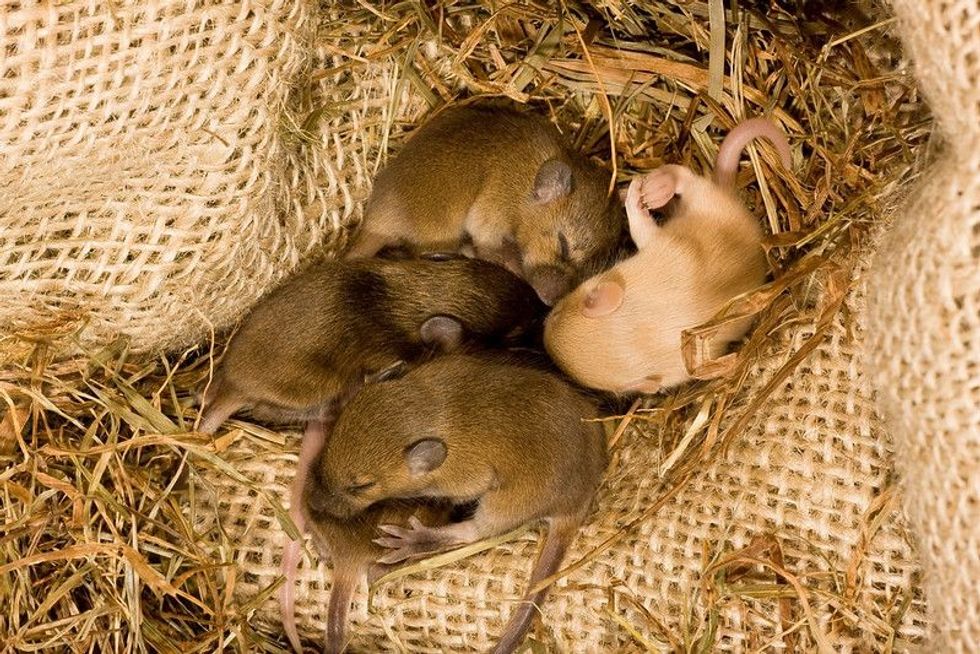

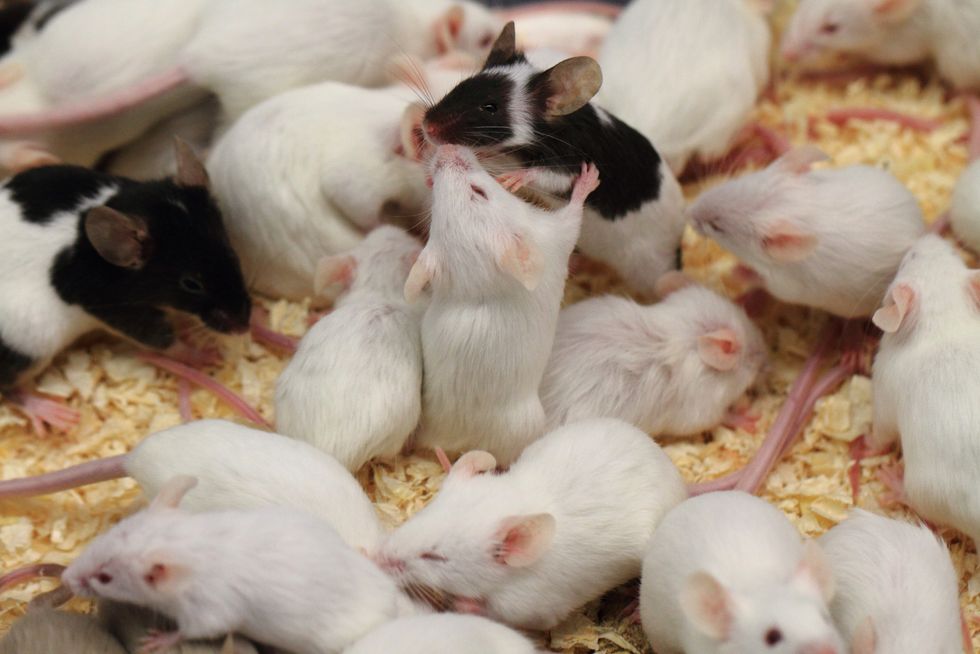 Shutterstock
Shutterstock